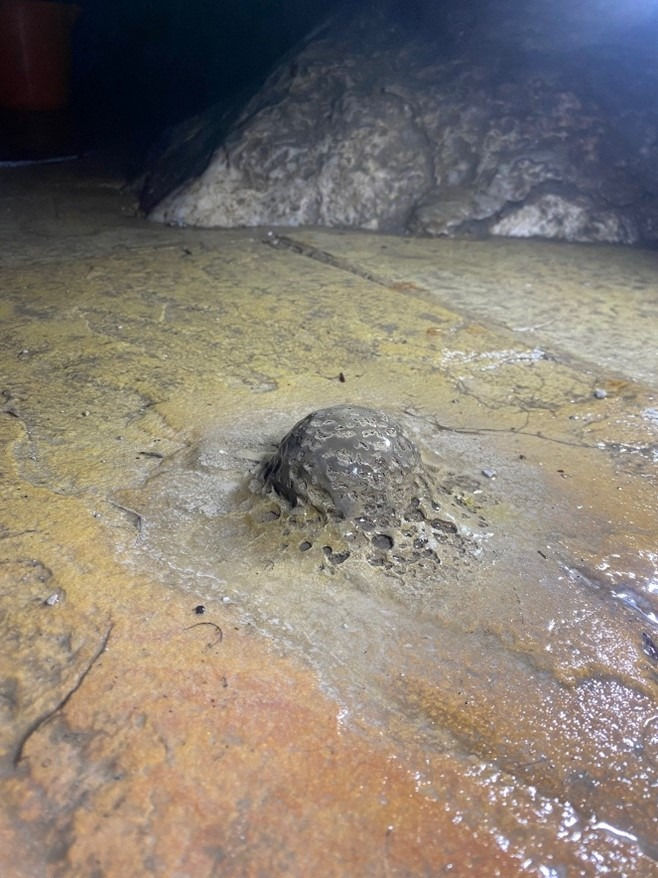Discovering life in inhospitable cave environments: new findings from Pooles Cavern
- Andi Smith

- Oct 4, 2022
- 3 min read
Updated: Dec 20, 2024
Caves are complex and inhospitable environments, but even in these dark, cold and nutrient limited parts of the world life can still thrive. Recent research from Pooles cavern sheds new light on how microbial communities not only survive but also develop unique communities in a whole range of cave environments, including drip waters, sediments and on stalagmite surfaces. Here Dr Andi Smith gives us an overview of this research, which was recently published in the journal, Biogeosciences https://doi.org/10.1029/2022JG006866.
At first glance caves may look devoid of any life, but when you start to look carefully it becomes clear they offer unique habitats for a range of species. To the human eye you may notice spiders, bats and aquatic life and as you start to delve deeper, there are even more complex communities which survive and thrive, even the most inhospitable of cave locations. Our recent work at Pooles Cavern has uncovered a surprisingly complex network of microbes which have carved out unique habitats, within which they survive and specialise to make best use of their environment.
Our search for microbes associated with Pooles Cavern actually started on the surface above the cave. This is because the deepest parts of most caves are quite isolated from more biologically diverse surface environments, with few mechanisms for microbes to be transported into the cave. The most obvious way for microbes to enter a cave is to be washed out of overlying soils and into the cave during times of peak rainfall. We expected therefore that we may find microbial communities in the cave that are quite similar to the soils above. Within the soils we found microbial communities specially adapted to surviving in forest soils, breaking down leaf and plant matter for energy.

One of the stalagmites we used to capture microbial communities. You can see us "growing" calcite on glass plates atop the stalagmite.
Our next focus was to look at the waters entering Pooles Cavern, to see if there was evidence of these “soil microbes” within drip waters. If so, this would show a clear link between the soil and the cave. However, to our surprise we found these waters very limited in microbial life and the microbes that we did find were not the same as those within the soils. This disconnect showed us that soil microbes could not cope surviving within the karst and cave environment and raised questions as to what we may find within the cave sediments and on speleothem surfaces.

An example of microbial cultures from Pooles Cavern. The collected microbes were actively grown back in the laboratory so we could get a better understanding of their community structure.
Our speleothem analysis focussed on parts of the cave in which the waters have very high pH, normally a condition quite inhospitable to most life forms. However, we found microbial communities specially adapted to surviving in this high pH, low nutrient environment, even on the surface of actively growing speleothems and straws. We also discovered that these communities are different from those in the drip water feeding them and those found in surrounding sediments. This must mean that over time each community developed to survive and self-sustain, disconnected from other regions of the cave and surface.
This work represents a first look into the unique microbiological world to be found in Pooles Cavern but it is clear from even this first glace there are hardy communities of microbes surviving in conditions that would be impossible for almost all other life!



Comments